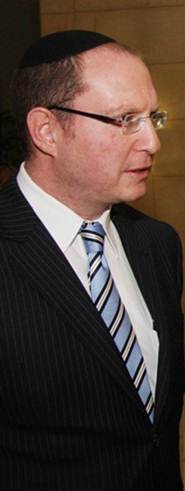RABBI GAVIN MICHAL
Is the Breslov we see in the streets of the world today, congruent with the Breslov we read about in the books? This question is easily asked, but not so comfortable or simple to answer. And, depending on who is doing the answering, there may be many different views. Here is one view.
From the original teachings, before factionalisation created splits within the movement, a different but clear model emerges.
Rebbe Nachman’s basic message is probably one of the simplest that has ever existed in Judaism: Speak to G-d every day, in a language you understand, as if you were talking to a friend. Always look for the good in everyone, as well as in yourself. Never ever give up. Be joyous and consciously seek ways to create happiness. Clear your mind and keep it clean. And most importantly, live morally.
The movement never had a book of its own customs as some other Chassidic groups do. Neither did they have their own version of the prayers. Someone once said that Breslov customs are simply the Shulchan Aruch.
Rebbe Nachman believed in integration with society, and personally did not shy away from irreligious people. Much to the chagrin of those around him, he played chess with avowed nonbelievers.
Good societal behaviour was something he felt very strongly about, saying: “Even kings and emperors can send their children to us to learn derekh eretz (respect and how to act appropriately)’https://www.sajr.co.za/images/default-source/People/group/breslov-home2.jpg” class=”sfImageWrapper”> I recently spoke to my teacher, Rabbi Chaim Kramer who heads the Breslov Research Institute. He is perturbed by the perception that offshoots of the movement may have become somewhat “cult-like”.
I recently spoke to my teacher, Rabbi Chaim Kramer who heads the Breslov Research Institute. He is perturbed by the perception that offshoots of the movement may have become somewhat “cult-like”.
In response to my questions he explained:
“Breslov never ever had a dress code. The goal was never to make everybody identical. According to Rebbe Nachman people are not clones! There are as many ways of being a Breslover Chasid as there are people who study the teachings.
“There is no standard Breslov path, with all the Chassidim being required to conform. It is up to the individual to decide how much of a Chassid he wants to be. Even those who live in a Breslov community, may not feel that their connection requires close involvement in communal activities.”
I pressed Rabbi Kramer further, and he continued: “Within Breslov today, there have arisen many subsidiary factions which purport to carry the Breslov banner, yet are extreme fringe movements not only to Breslov, but some even to Judaism itself. ”
The risk certainly exists in Breslov, as it does in every movement, that one may misinterpret some of the teachings. Rebbe Nachman once said, tellingly: “Even among my Chassidim, there will be false leaders! It is possible to see in the followers the qualities of their leader. If he is normal, the followers will also be. The opposite is also true.”[4] -And sadly, we see today that people who are not in full control of themselves, can easily have their hearts and souls swayed.
I was first introduced to Breslov by the extensive conceptual writings of Rabbi Aryeh Kaplan, whose thinking left a profound impression on many people. His teacher was the late father-in-law of my teacher, Rabbi Kramer. Another influential figure, from the other side of the rainbow, was Rabbi Shlomo Carlebach, at whose funeral the Chief Rabbi of Israel said: “He was a Breslover Chassid. And now Rebbe Nachman is waiting to welcome him home.” Through these individuals I discovered both depth and beauty in the Breslover teachings.
I hang on to these dearly, for I fear that with the free fall surrounding the movement today, we may have lost some of this magnificence.
- Siach Sarfei Kodesh3:74
- See Siach Sarfei Kodesh.
- Rabbi Nachman’s Wisdom 51
- See Likutey MoharanI, 140
Rabbi Michal’s two recent writes on the topic
The above stories garnered over 50 user-posted comments in all. Check them out and join the conversation.
Alan
Sep 4, 2014 at 10:23 am
‘Hi Rabbi. I love the way you always defend the altruism, core beauty and truth of Torah. Thank you for restoring that for me.’
gabi
Sep 4, 2014 at 6:57 pm
‘The following letter appeared in last weeks edition of Hamodia;
\”As subscribers to your important newspaper, Hamodia, the newspaper of Charedi Jewry, I was very surprised to see time after time during the military operation the words, \”our forces\” …It is important to point out that we never relied on or put our trust in flesh and blood and our true forces are — only Torah learning and the students who learn Torah\”.’
Choni
Sep 5, 2014 at 8:09 am
‘Gabi, Hold on a minute!
From our nations first war in the wilderness, Moses kept his arms towards the sky in prayer, while the soldiers fought the enemy.
It is true that when he lowered his arms Israel suffered defeats. So, Gabi, the fact is that it required both prayer and ‘flesh and blood’ soldiers to win wars.’